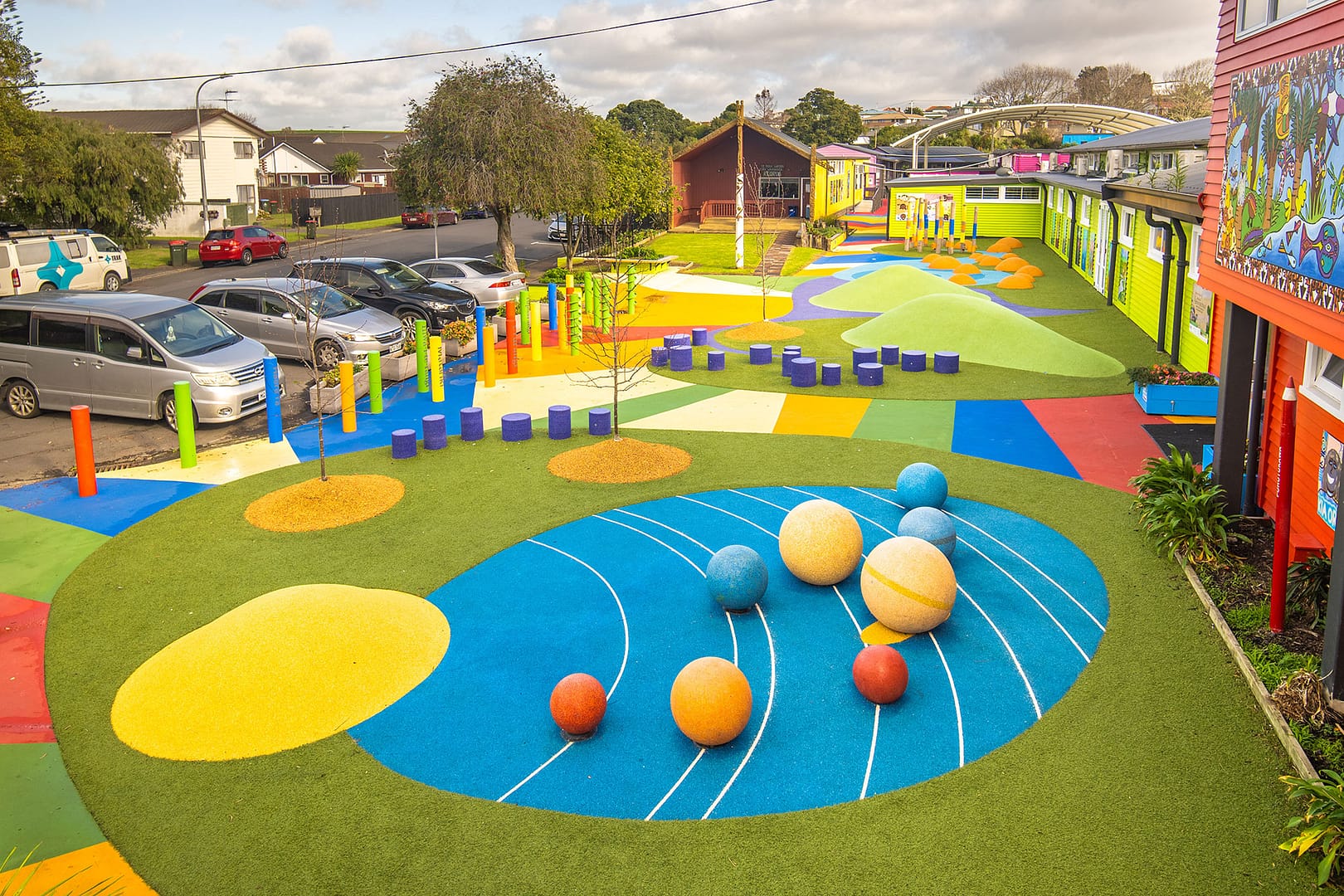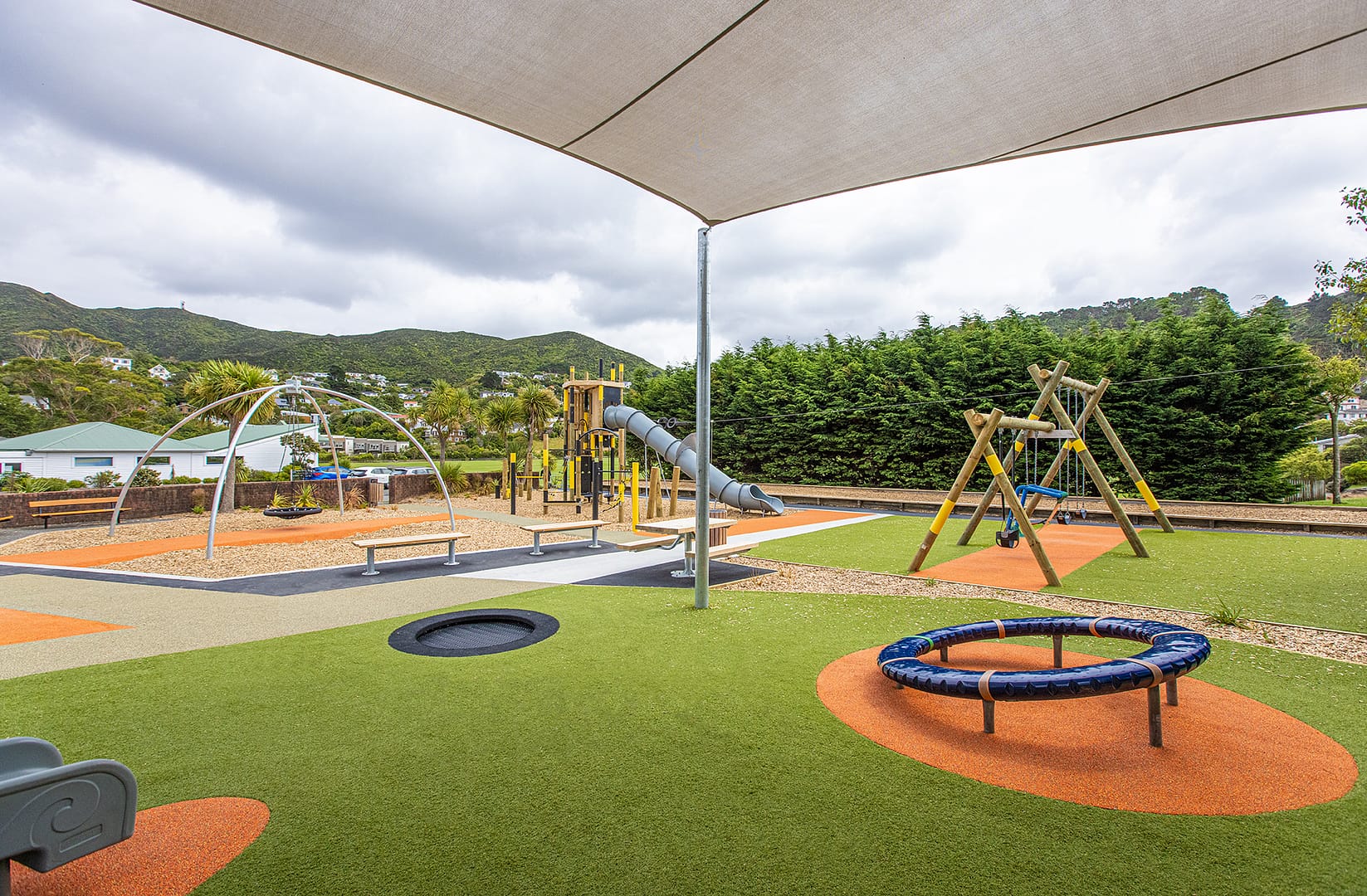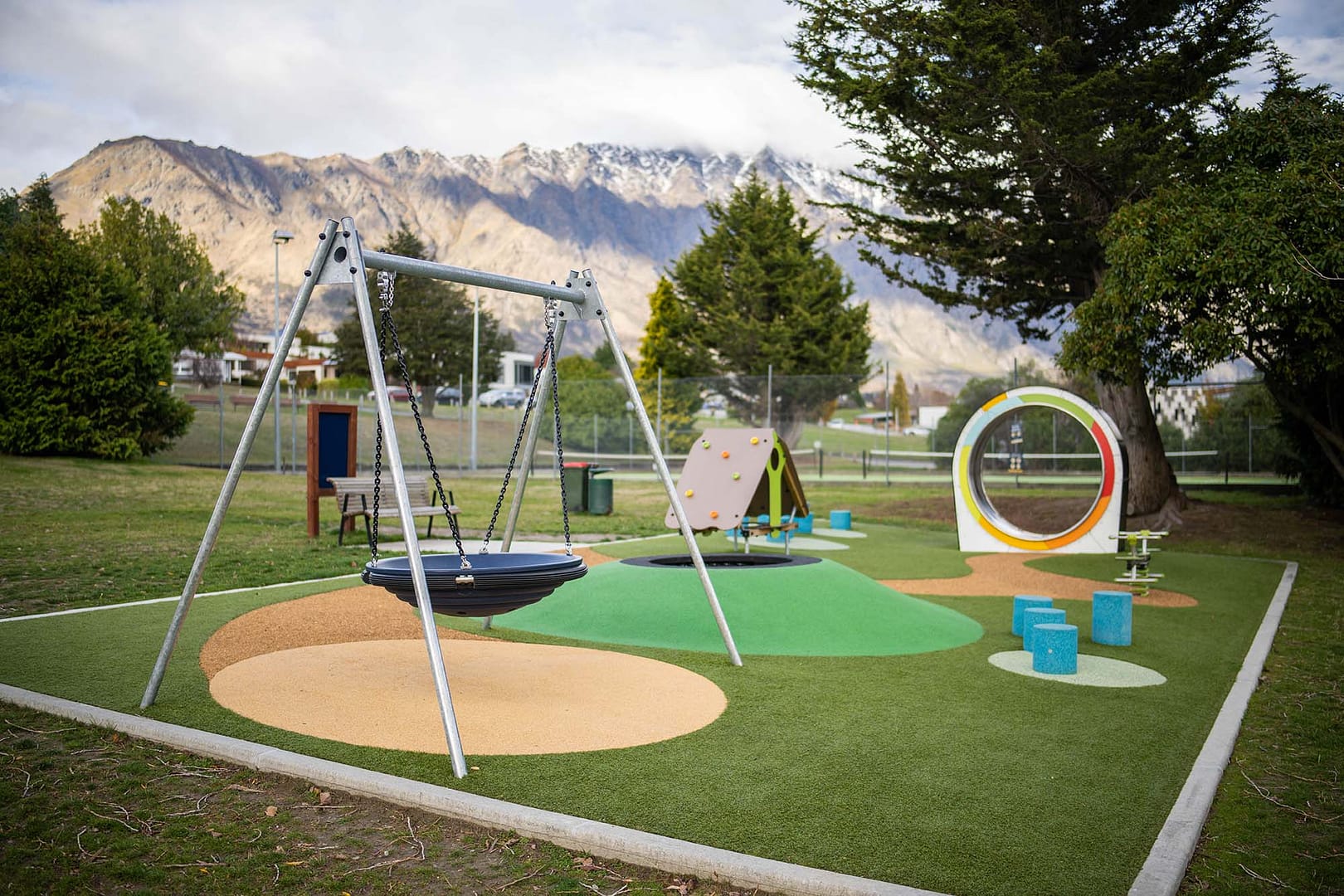Taking on a new playground project but unsure what kind of play environment you should be looking at creating?
Here at Creo, we’ve put together the six most important elements you should look into when choosing the type of playground that best suits your needs.
- Desired Aesthetic
- Level of Inclusion & Accessibility
- Age Range
- Range of Play Types
- Level of Customization
- Size
Click here to download the Creo “How to Build a Playground in 2022” Guide

Desired Aesthetic
It’s important to establish the type of playground aesthetic you want at the beginning of your project so your designer can choose equipment and surfacing that aligns with your goals.
A playground’s aesthetic really comes down to the types of materials used. Plastic, rubber, and metal materials are often associated with vibrancy, colour, and a finished ‘manufactured’ look.
Playgrounds that stick to wood and natural fibres are often seen as more ‘natural’ than these types of playgrounds.
Of course, all these different materials can be used together to create a blended aesthetic but striking the right balance between them is a difficult challenge and one that’s probably best left to a professional playground designer.

Level of Inclusion & Accessibility
If you are looking to create a fully inclusive and accessible playground, then you need to think about the equipment and materials you use.
Many playground equipment suppliers now offer accessible play options such as wheelchair-accessible carousels and mini-trampolines. Other types of equipment, such as basket swings, allow for easy transfer between the equipment and a wheelchair.
Sensory elements are important, particularly for inclusion as colours, sounds, and textures all play a large role in creating a multi-sensory space. Highly visible colours, for example, can be used to mark out dangerous areas, such as around swings for children with low vision, and musical play equipment can provide an alternative play experience.
Finally, for a playground to be truly inclusive and accessible, it needs smooth safety surfacing that doesn’t hinder movement.

Age Range Catered For
When designing your playground, it is important to establish the age of the end users.
Many schools and early childhood centres are able to separate their play areas into junior and senior playgrounds to provide age-appropriate equipment at each level. But some playgrounds, particularly those in public spaces, must be designed for all ages. This is where you need to decide how much area you allocate to each age group. This will help you decide which play equipment items you need.
Often, the older you go, the larger and more expensive the equipment is. It’s also important to think beyond the play equipment, for example, your playground may need extra seating in areas where adults will be supervising young children.

Range of Play Types
The range of play types required will have a large impact on the type of playground you build.
To determine which types of play you need, think about the children who will be using the playground. Will there be a lot of children using it at one time or just a few?
What types of play will they require?
Some types of play to consider are swinging, climbing, balancing, spinning, sliding, and rocking. We recommend providing a balance of play types to make your playground more engaging for longer.
As a rule, look for play items that deliver distinct types of play to many children at once that are engaging enough to keep them playing for a considerable period.

Level of Customization
Building a playground doesn’t just need to be about providing play for children, it can also be about creating a space where people connect, collective stories are told, and cultural values are shared and reaffirmed.
It doesn’t matter if it’s a school, early childhood, or public playground. In each case, these playgrounds are built for communities. Listening to their voices during the design process and incorporating their ideas into your playground build will be a great way to create something special for everyone.
The degree to which you incorporate your community’s cultural reference points into your playground design will vary depending on your budget and time but adding a unique touch doesn’t have to be complicated. It can be as simple as adding a touch of paint to show local colours, logos, or symbols.

Size
Lastly, you need to think about how big your playground will be. Here is where knowing your budget is vital.
As a guide, when building a school playground or early learning centre playground you will pay between $350 – $800 per m2 and for a council playground the cost is between $550 – $1000 per m2.
Our recommendation is to speak to an experienced playground builder who can give you guidance on how big you can go with your playground based on your budget, desired aesthetic, level of inclusion, age range catered for, range of play types, and level of design.
At Creo, we have playground consultants who are very experienced at this and can help you bring all of these aspects together into an achievable plan.
If you’d like to talk to someone about a future project or would like a concept designed for your space, give us a call at 0800 000 334, or book a 15-minute ideas session with one of our consultants.
